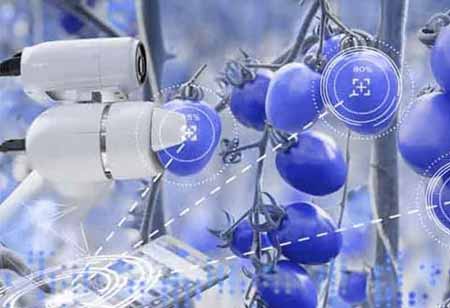Thank you for Subscribing to Agri Business Review Weekly Brief
Chain of Agricultural Value: Establishing Cutting-Edge Technologies to Keep Food Safe

By
Agri Business Review | Wednesday, November 10, 2021
Stay ahead of the industry with exclusive feature stories on the top companies, expert insights and the latest news delivered straight to your inbox. Subscribe today.
Emerging technologies like traceability, artificial intelligence, and blockchain have substantially improved food security, particularly following the COVID-19 epidemic.
FREMONT, CA: The demand for value chain transparency in the food sector is stronger than it has ever been; due to the globalization of the food chain, individuals can now know how, where, and by whom the food that they consume was produced and the societal and environmental costs involved. In addition, in recent years, emerging technologies such as traceability, artificial intelligence, and blockchain have substantially improved food security, particularly following the COVID-19 epidemic.
The global food value chains have already undergone a paradigm shift due to these technologies, which have made them more transparent and data-driven. As a result, the cycle of Farmers, manufacturers, distributors, retailers, and customers will get affected by this development, which will upgrade the efficiency and transparency of the entire food chain. Additionally, governments worldwide are investing in services critical to the growth and safety of agriculture and agri-food industries as countries try to recover economically from the COVID-19 pandemic.
Technology Is Used in A Variety of Ways by Actors in The Agricultural Value Chain
In agriculture, there are numerous difficulties that a single technical implementation may not be able to address. It also involves using technology since food producers and distributors would need to know who cultivated the crop, under what conditions, when, and where. Furthermore, traceability helps in the effective and transparent operation of the food supply chain. It also encourages producers to tell their customers about their provenance.
Farm automation will continue to increase steadily in the agri-food supply chains, with less reliance on manual labor being explored by the industry, owing to disruptions with the workforce scarcity experienced during COVID. Probiotics, a technology that uses computer-controlled robots to interface physically with humans and other automation systems, is also desperately needed in the food chain. In addition, drones used for agricultural surveillance, sowing, and other farming tasks require blockchain technology, which prevents data from being altered after being recorded. Many different technologies, such as big data analytics and artificial intelligence, have already been adopted worldwide.
The ‘scale’ of farming plays a significant part in determining monitoring, evaluation, and ROI; smaller fields versus large acres are where technology intervention needs to be standardized. One of the primary goals of deploying cutting-edge technologies is to improve food safety by reducing the danger of spoiling, waste, or contamination.





